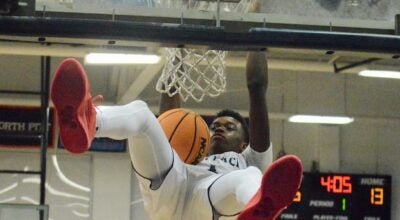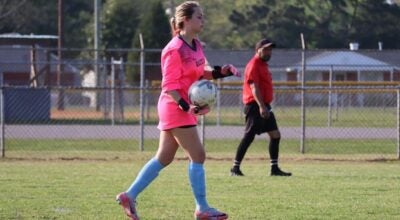Stepping Up: My Take — Understanding CTE
Published 5:40 pm Friday, March 4, 2016
Concussions and football have been linked for some time now. Federal litigation began back in the spring of 2011 when a lawsuit was filed on the behalf of Jim McMahon, Ray Easterling and five other players. Thousands more former National Football League players joined in on the class-action lawsuit afterwards. A settlement reached April 2015 awarded eligible players up to $5 million apiece for the medical issues linked to head trauma suffered.
Chronic traumatic encephalopathy (CTE) is the degenerative disease associated with those that have suffered head trauma. CTE has been brought to the forefront most recently by the film Concussion, starring Will Smith, that came out late last year. It focuses on the story of Dr. Bennet Omalu, who was the first to publish findings on CTE in football players.
A lot of awareness of CTE has been generated recently. The next step, of course, is research. Being aware of the causes and effects of CTE has led to safer practices in contact sports, but it’s important to learn how to treat those already suffering from it.
That’s what has encouraged numerous current and former athletes to pledge their brains posthumously to CTE research. One of the most notable and recent instances was former U.S. national team soccer star Brandi Chastain.
It was a relatively groundbreaking announcement. According to the Washington Post, two-thirds of the 307 brains acquired by the Concussion Legacy Foundation are from former football players, but they’re far from the only athletes at risk.
Only four belonged to women.
Former professional wrestler Kevin Nash also recently promised his brain and spinal cord to CTE research. Concussions in pro wrestling have been a longstanding issue. It culminated in Chris Benoit’s grizzly double-murder and suicide back in 2007. West Virginia University neurosurgeon Julian Bailes discerned that years of repeated head trauma left Benoit’s brain resembling “the brain of an 85-year-old Alzheimer’s patient.”
While a lot of the national media attention may be centered on concussions in the NFL, it remains just as significant an issue in many other sports. Chastain, who helped the U.S. to two World Cups and two Olympic gold medals, also advocates that heading the soccer ball be banned for competitors under the age of 14.
Why? Because research suggests it doesn’t take decades of playing a sport for an athlete to suffer enough head trauma for CTE to be an issue. A 2012 study by the Boston University Center for the Study of Traumatic Encephalopathy found evidence that suggests long-term brain damage in high school football players that stopped playing before college.
Every new bit of research done and each new discovery relating to CTE has encouraged safer practices. Doctors have worked with manufactures to make safer equipment.
But it’s never going to be enough. No matter the level, there is never a point where enough effort can be put into protecting the athletes that entertain us. Whether it’s a Friday evening at Choppy Wagner Stadium, the Hurricanes hitting the ice at PNC Arena, or the Panthers trotting onto the gridiron at Bank of America Stadium, these athletes do what they do because they love it.
And we love to watch. Sports bring people together, but it can be hard to enjoy it in good conscious when the athletes are risking their livelihood for our entertainment.
That’s why it’s nice to see preemptive measures. For example, the North Carolina High School Athletic Association limits contact during practices. According to Washington football coach Sport Sawyer, teams are allotted just one hour of contact at practice per week. He said he generally limits that to wrap ups, further decreasing risk.
Safety and awareness has to trickle down to the youngest of levels. There’s still a lot to be learned about concussions and CTE, but given what is known now, it’s paramount to minimize head injuries for everyone — kids all the way to professionals.





